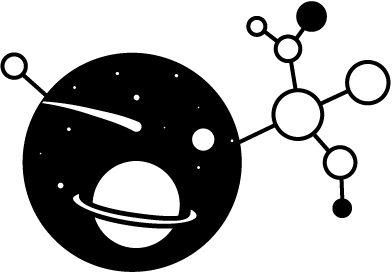Group IAB, currently with 264 members, is the second largest iron-meteorite group and the largest non-magmatic iron group. Many of its members contain silicates and all have been modeled to have crystallized from impact melt pools on chondrite parent bodies. The UCLA team, under the direction of John Wasson, analyzed more than 220 IAB irons over five decades using neutron activation analysis. Most of the data were published in six journal papers. The UCLA team works with AstroMat to make these data available online in the form of both downloadable datasheets and interactive tables. Group IAB is part of an ongoing effort to archive the UCLA iron meteorite data. Data for other iron meteorite groups will be made available on AstroMat in the coming months.
AstroRepo Datasets
Wasson, J. T., Willis, J., Wai, C. M., Kracher, A., 2021. Origin of Iron Meteorite Groups IAB and IIICD, Version 1.0. Interdisciplinary Earth Data Alliance (IEDA). https://doi.org/10.26022/IEDA/112040.
Choi, B., Ouyang, X., Wasson, J. T., 2021. Classification and origin of IAB and IIICD iron meteorites, Version 1.0. Interdisciplinary Earth Data Alliance (IEDA). https://doi.org/10.26022/IEDA/112041.
Wasson, J. T., Kallemeyn, G. W., 2021. The IAB iron-meteorite complex: A group, five subgroups, numerous grouplets, closely related, mainly formed by crystal segregation in rapidly cooling melts, Version 1.0. Interdisciplinary Earth Data Alliance (IEDA). https://doi.org/10.26022/IEDA/112042.
Wasson, J. T., Ouyang, X., 2021. Compositional range in the Canyon Diablo meteoroid, Version 1.0. Interdisciplinary Earth Data Alliance (IEDA). https://doi.org/10.26022/IEDA/112043.
Wasson, J. T., 2021. Composition of 13 elements in 25 IAB-MG irons and some Campo-like irons, Version 1.0. Interdisciplinary Earth Data Alliance (IEDA). https://doi.org/10.26022/IEDA/112044.
Wasson, J. T., 2021. The chemical classification of iron meteorites: IV. Irons with Ge concentrations greater than 190 ppm and other meteorites associated with group I, Version 1.0. Interdisciplinary Earth Data Alliance (IEDA). https://doi.org/10.26022/IEDA/112045.
References
Choi, B. G., Ouyang, X., & Wasson, J. T. (1995). Classification and origin of IAB and IIICD iron meteorites. Geochimica et Cosmochimica Acta, 59(3), 593-612.
Wasson, J. T. (1970). The chemical classification of iron meteorites: IV. Irons with Ge concentrations greater than 190 ppm and other meteorites associated with group I. Icarus, 12(3), 407-423.
Wasson, J. T. (2019). Campo del Cielo: A Campo by any other name. Meteoritics & Planetary Science, 54(2), 280-289.
Wasson, J. T., & Kallemeyn, G. W. (2002). The IAB iron-meteorite complex: A group, five subgroups, numerous grouplets, closely related, mainly formed by crystal segregation in rapidly cooling melts. Geochimica et Cosmochimica Acta, 66(13), 2445-2473.
Wasson, J. T., & Ouyang, X. (1990). Compositional range in the Canyon Diablo meteoroid. Geochimica et Cosmochimica Acta, 54(11), 3175-3183.
Wasson, J. T., Willis, J., Wai, C. M., & Kracher, A. (1980). Origin of iron meteorite groups IAB and IIICD. Zeitschrift für Naturforschung A, 35(8), 781-795.

